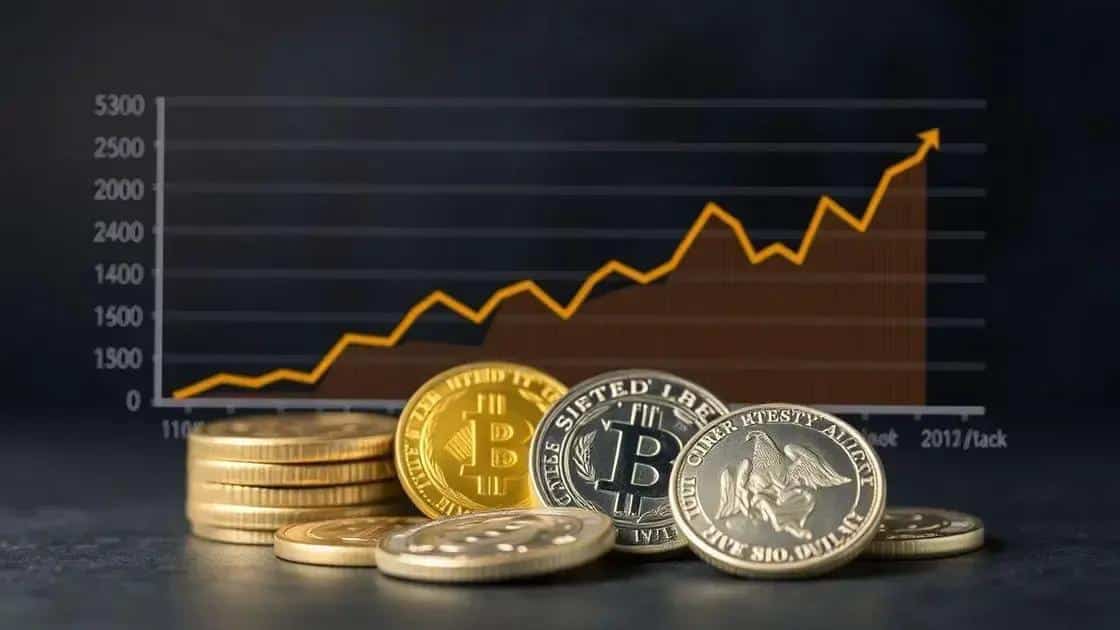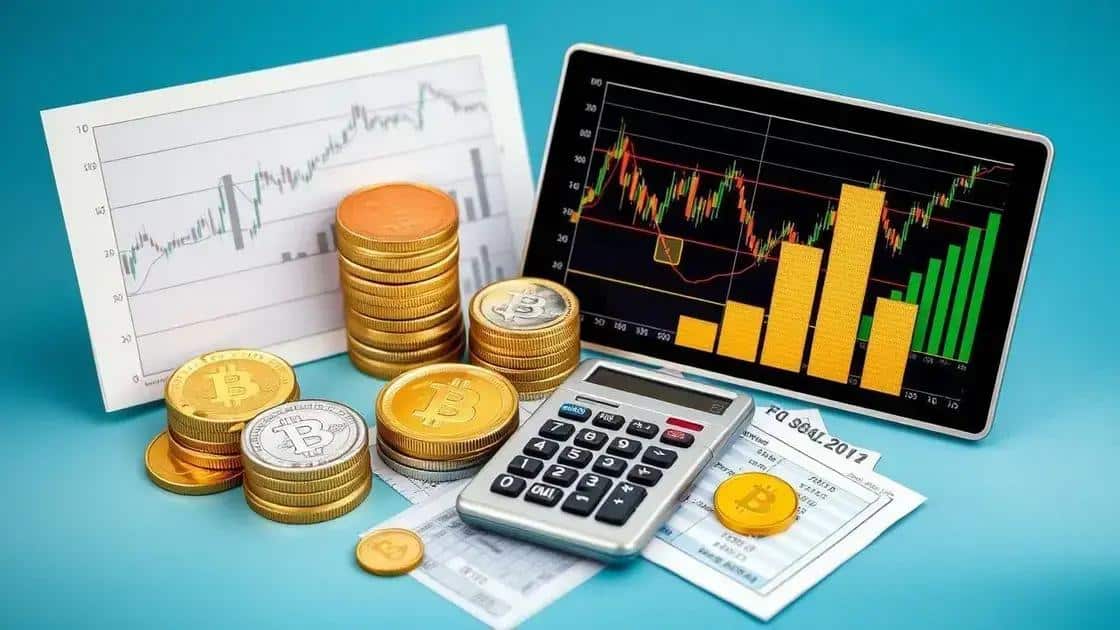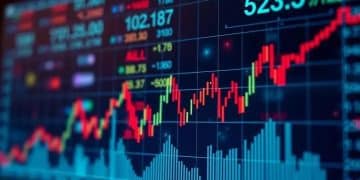Gold price trends vs silver: a closer look

Gold price trends vs silver reveal distinct market behaviors, influenced by economic factors, geopolitical events, and demand dynamics, making them essential considerations for investors.
Gold price trends vs silver have intrigued investors for decades. Understanding these trends can help you make informed decisions in a fluctuating market. Have you ever wondered how these two precious metals compare?
Overview of gold and silver market dynamics
The market dynamics of gold and silver are fascinating and complex. Understanding these factors can help investors navigate their choices more effectively. Both metals serve as crucial economic indicators, frequently responding to global events and market conditions. Are you ready to delve into the details?
Market Influences on Gold
The price of gold is often seen as a safe haven during economic uncertainty. When the stock market declines or geopolitical tensions rise, investors flock to gold. This trend results in increased demand, pushing prices higher.
Factors Affecting Silver Prices
Silver, while also a precious metal, has unique dynamics. Its price is not only influenced by investment demand but also industrial usage. Silver is used in electronics, solar panels, and medical applications, which can affect its market significantly.
- Economic indicators such as inflation and interest rates
- Industrial demand changes for silver
- Currency strength, especially the U.S. dollar
- Geopolitical events impacting investor sentiment
Both metals tend to move in correlation due to their nature as precious assets. However, gold price trends frequently dominate the conversation, overshadowing the shifts in silver.
Seasonal trends also play a role. For instance, gold demand tends to spike during certain holidays and wedding seasons in countries like India. Similarly, silver’s use in technology can lead to price fluctuations as new innovations emerge.
Historical price trends of gold vs silver

Exploring the historical price trends of gold vs silver reveals significant insights into their market behaviors. Both metals have unique histories influenced by various economic factors and global events. Understanding these past trends can help investors make wise choices today.
Price Movements Over the Decades
Gold has traditionally been viewed as a safe haven asset. Its price saw major spikes during periods of economic uncertainty, especially during the 2008 financial crisis. In contrast, silver, while following similar trends, often reacts differently due to its industrial usage.
Comparative Analysis
When comparing the two, it becomes evident that gold usually holds its value better in times of crisis. Meanwhile, silver’s price can be more volatile, driven by its demand in technology and industry.
- The spike in gold prices during the 1980s and 2000s
- Silver’s peaks and troughs following industrial trends
- Geopolitical events that influenced both metals’ prices
- Market sentiment and its role in price determination
In recent years, both metals have experienced notable fluctuations. For instance, the rise in uncertainty due to global pandemics often correlates with higher gold prices. However, silver trends can diverge based on its practical applications.
Understanding these historical trends gives investors a clearer picture of how these metals interact with the market. Major economic events have historically impacted both gold and silver prices, creating opportunities and challenges for traders and investors alike.
Factors influencing gold and silver prices
Several key factors influence the prices of gold and silver. Understanding these elements helps investors make better decisions in the market. Both metals are affected by economic signals, geopolitical events, and variations in demand.
Economic Indicators
Gold prices commonly rise when inflation increases. As the cost of living goes up, people seek gold as a safe investment. Similarly, when interest rates fall, gold becomes more attractive while silver also benefits.
Geopolitical Events
Global conflicts or economic instability can trigger fluctuations in both gold and silver prices. For instance, during times of crisis, investors may rush to secure gold as a form of currency. This heightened demand pushes prices even higher.
- Inflation rates and their impact on purchasing power
- Changes in interest rates and their effect on investment
- Unemployment rates indicating economic health
- Natural disasters that may disrupt supply chains
In addition to economic changes, demand for jewelry and industrial applications also drives prices. In many cultures, gold is a symbol of wealth and is often purchased for special occasions. Silver has a significant role in electronics and solar technology, impacting its price based on industry needs.
Understanding how these factors interact aids investors in predicting potential market shifts. Both metals react differently based on their intrinsic properties and market behaviors.
Investment strategies for gold and silver

Investment strategies for gold and silver require careful consideration of market conditions and individual financial goals. Both metals can provide excellent opportunities for investors looking to diversify their portfolios. Understanding effective strategies can help maximize profits.
Diversifying Your Portfolio
One common strategy is to use gold and silver as hedges against inflation. Holding physical metals can protect your investments during economic downturns. This tactic helps balance risks across various asset classes.
Timing Your Investments
Another important approach is to analyze market trends and identify the best times to buy or sell. Monitoring historical price movements can help investors make informed decisions. Timing can significantly affect your overall returns.
- Invest in gold during periods of high inflation
- Consider silver during industrial booms
- Keep an eye on interest rate changes
- Avoid emotional decisions during market volatility
Investors should also consider utilizing ETFs or mutual funds that track gold and silver prices. This method allows you to gain exposure to these metals without holding physical assets. Additionally, it can lower the costs of storage and insurance.
Finally, always have an exit strategy. Knowing when to sell your investments is just as crucial as knowing when to buy. Setting clear financial goals will help you make better decisions.
FAQ – Frequently Asked Questions about Gold and Silver Investments
What are the main factors that influence gold and silver prices?
Gold and silver prices are influenced by economic indicators, geopolitical events, demand for industrial use, and market sentiment.
How can I diversify my investment in gold and silver?
You can diversify by investing in physical metals, ETFs, or mutual funds that track precious metal prices, spreading your investment across various options.
When is the best time to buy gold and silver?
The best time to buy is typically during economic uncertainty or when inflation is high, as demand tends to increase during these periods.
What strategies should I use for investing in gold and silver?
Consider using a combination of buying physical assets, monitoring market trends, and having a clear exit strategy to maximize your returns.






